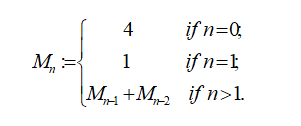The Mulatu Numbers in Actions
Abstract
The Mulatu numbers were introduced in [1]. The numbers are sequences of numbers of the form: 4,1, 5,6,11,17,28,45... The numbers have wonderful and amazing properties and patterns.
In mathematical terms, the sequence of the Mulatu numbers is defined by the following recurrence relation:
The double Angel Formulas for Fibonacci and Lucas numbers are given by the following formulas respectively.
Since both the Fibonacci and Lucas numbers have double angle Formulas, It is natural to ask if such formula exists for Mulatu Numbers. The answer is affirmative and produces the following paper.
2000 Mathematical Subject Classification: 11
Downloads
References
Burton, D. M., Elementary number theory. New York City, New York: McGraw-Hill. 1998.
Copyright (c) 2021 GPH - International Journal of Mathematics

This work is licensed under a Creative Commons Attribution-NonCommercial-NoDerivatives 4.0 International License.
Author(s) and co-author(s) jointly and severally represent and warrant that the Article is original with the author(s) and does not infringe any copyright or violate any other right of any third parties, and that the Article has not been published elsewhere. Author(s) agree to the terms that the GPH Journal will have the full right to remove the published article on any misconduct found in the published article.





























